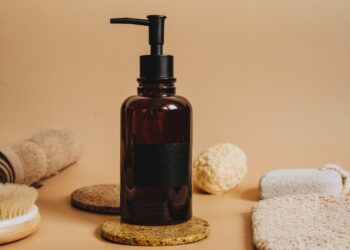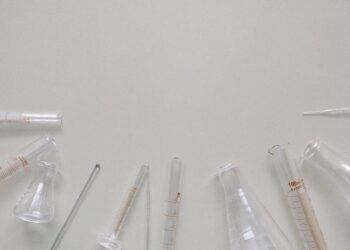It’s milder
In comparison to other homemade scrubs that can cause micro-scarring and other skin problems such as those that make use of baking soda and sea salt, a brown sugar exfoliant is milder. This is because the edges or corners of sugar granules are not as harsh or sharp as other homemade exfoliating scrubs. However, this doesn’t mean that you don’t have to worry about rubbing your skin too much when using this type of scrub. You still need to make sure that you don’t rub too vigorously since this can still lead to micro-scarring and superficial cuts or wounds. 
It’s a humectant
Like honey, brown sugar is a natural humectant, which means that it has the ability to preserve the moisture of the skin. This means that using a brown sugar exfoliant is actually moisturizing for the skin despite the fact that exfoliation can dry out the skin since natural moisture can be sloughed off together with the dead skin cells.
Hence, people with dry skin don’t have to worry about increasing their dry patches or developing wrinkles since this type of scrub is more hydrating than other types of exfoliating products.
It’s a natural source for glycolic acid
One of the most popular cosmetic procedures for women is chemical peels since this procedure can effectively lessen wrinkles, brighten the complexion, and cure acne by penetrating the skin layer and increasing the skin cell turnover rate. This means that skin regeneration and renewal are accelerated by using this type of acid. However, the form of glycolic acid that is used in this chemical procedure can be too harsh for the skin.
This is why it’s better to make use of the glycolic acid that can be found in a brown sugar exfoliant since the acid concentration that is found in this scrub is milder and more suitable for those with sensitive skin.
It can smooth out the skin
Because of its hydrating properties, using a brown sugar exfoliant instead of a more abrasive scrub can help prevent the formation of wrinkles since the skin won’t become too dry after the exfoliation process. It also gives you a milder way of sloughing off the wrinkled layer of the skin without using harsh chemicals. It can also buff away deep and dark acne scars, which can be very difficult to remove without using a strong form of acid or whitening product. When combined with honey, this type of scrub can also prevent future acne breakouts.
 DIY Brown Sugar Exfoliant: Products to Use
DIY Brown Sugar Exfoliant: Products to Use
B
ecause of the fact that DIY brown sugar exfoliant recipes don’t need the help of abrasive chemicals in order to slough off dead skin cells, many prefer this type of exfoliation method since it’s healthier and more natural. However, adding certain ingredients ensures that you can maximize the benefits of this type of skin care routine. Here are some of the products that you can add to your brown sugar exfoliant recipe:
Cinnamon
If you want to add another type of scrubbing agent into your brown sugar exfoliant mixture, your best option is to use cinnamon. Ground cinnamon has a lot of benefits to the skin when used as a mask or a scrub. Aside from scrubbing dead skin cells off your face, this ingredient also stimulates blood flow to the skin, which makes this organ plumper and less prone to wrinkles. This benefit also makes cinnamon an excellent anti-acne agent since it can dry out active pimple breakouts. However, you need to make sure that you add an oil to your mixture to ensure that this sugar and cinnamon combination isn’t too harsh for your skin. 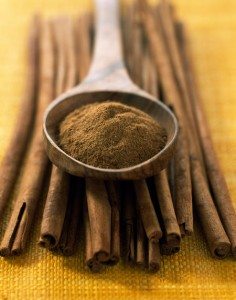
Vitamin E Oil
Because of the fact that Vitamin E oil is best extracted from Vitamin E capsules that come in soft gels, this type of oil can only be used sparingly per treatment. This means that you cannot use Vitamin E oil as the base for your brown sugar exfoliant scrub unless you’ve the equipment that can extract Vitamin E into this type of form. You also need to pick the right supplement for the job. According to several studies, tocopherol is the only form or derivative of Vitamin E that is beneficial for the skin when applied topically.
Lemon
When it comes to brightening and evening out the skin tone, lemon is one of the most common ingredients that come to mind because of its efficiency and accessibility. However, when using this ingredient as a part of a brown sugar exfoliant recipe, you need to remember that using lemon oil instead of juice is more advisable.
Also Read: How to Say No to Sugar Cravings
Don’t be fooled into thinking that putting sugar onto a slice of lemon and rubbing it onto your skin is a good idea since this can be too harsh for your skin. If you want to use lemon juice when making your scrub, it’s best to dilute it in water or to use it in conjunction with other types of oils such as coconut oil to balance out the harshness of the juice and the sugar.
Coconut, Almond or Olive Oil and Honey
If you’re looking for a base ingredient for your exfoliant scrub, your best choices include olive oil, almond oil, coconut oil, and honey. It all depends on your skin type. For those with oily skin, honey is more advisable since it’s lighter and doesn’t clog pores. Almond, olive, and coconut oil, on the other hand, are more suitable for those who’ve dry skin since these ingredients are incredibly hydrating.
By remembering these ingredients, you’ll find it easier to come up with a brown sugar exfoliant recipe that will work well for your skin type and comfort.
 Using a Brown Sugar Exfoliant According to Your Skin Type
Using a Brown Sugar Exfoliant According to Your Skin Type
T
he key to reaping all of the benefits of a brown sugar exfoliant and avoiding many skin problems that can be caused by inappropriate scrubbing is to know how to use this type of DIY product according to your skin type. This ensures that over- and under-exfoliation is avoided and that you use the right ingredients that can maximize the benefits of sugar and bring forth other benefits as well. Here are some of the guidelines for using a brown sugar exfoliant:
For oily skin
According to many skincare experts, people with oily skin are more likely to suffer from clogged pores since the oiliness of their skin acts like a magnet for pollution and dirt. It has also been proven that people with oily skin have larger pores than those with dry or normal skin. This means that more materials such as pollutants and dead skin cells can become embedded in the pores. This is why it’s highly advisable for people with oily skin to use a brown sugar exfoliant at least two times per week.
Two of the most suitable ingredients to use when making a brown sugar exfoliant are honey and apple cider vinegar. Because of the fact that apple cider vinegar is acidic, it can help control the excessive oil production in the skin. Honey, on the other hand, can adequately keep the skin moisturized despite being lighter than other scrub bases such as almond oil and olive oil, which is still necessary even if you already have oily skin. 
For dry skin
People with dry skin are often wary about exfoliating their skin since exfoliation can exacerbate dry patches and further dry out the skin. However, this doesn’t mean that exfoliation should be skipped by people with dry skin since their dead skin cells still need to be sloughed off together with the dirt and pollution that may be embedded in their pores.
To avoid further drying the skin, these people are highly advised to exfoliate no more than four times a month or once a week using a brown sugar exfoliant since this type of scrub is made up of a natural humectant.
Another important way to avoid drying out the skin during the exfoliation process is to use a heavy base when making a brown sugar exfoliant. It’s more advisable to use olive oil, coconut oil, and almond oil since these ingredients are very heavy and hydrating. These types of bases are also rich in Vitamin E, which plays a vital role in proper hydration and getting rid of free radicals in the skin. These ingredients can also prevent acne breakouts, which makes them the perfect ingredients for people with dry and acne-prone skin.
Also Read: How to Say No to Sugar Cravings
By remembering these basic guidelines, you won’t need to worry about using the wrong ingredients when making a brown sugar exfoliant or exacerbating your pre-existing skin problems. Following these guidelines also ensures that you don’t waste your money on doing a trial and error process in order to find the ingredients that work best for your skin type.
 What to Avoid When Using Brown Sugar Exfoliant
What to Avoid When Using Brown Sugar Exfoliant
D
espite being an all-natural option, a brown sugar exfoliant can still cause several skin problems if you don’t use it properly. Some of these problems include skin irritations, redness, uneven skin tone, and skin sensitivity. This is why you need to learn more about the habits or conditions that you should not do when it comes to using a brown sugar exfoliant. Here are some of the things that you should avoid:
Scrubbing your face too much
Always remember that the number of times that you exfoliate your face should be based on your skin type regardless of the product that you’re using. According to many skincare experts, people with oily skin are advised to exfoliate their face at least twice a week since they are more prone to clogged pores due to excessive oil production. Those with dry skin, on the other hand, should only exfoliate once a week since scrubbing their face more than once every week would further exacerbate dryness of the skin. This means that even if you use a brown sugar exfoliant, which is considered a natural way of sloughing off dead skin cells, you still need to follow this schedule. 
Sun exposure
Because of the fact that you’re basically sloughing off the first layer of your skin, which is responsible for filtering out UV rays, you need to use products that can provide you with the necessary amount of sun protection when using a brown sugar exfoliant. Invest in other products that contain any type of sun protection aside from moisturizers and sun block. You also need to reapply these products throughout the day, especially if you’re commuting from home to work or school. You should also use umbrellas and other items that can give you shade whenever sun exposure is inevitable.
Skin dryness
Even if you combine your brown sugar exfoliant with other ingredients that are hydrating to the skin, you still need to use a heavy-duty moisturizer after exfoliating. This is because exfoliation is a very drying process even for those with oily skin, which means that you need to replenish the moisture that is lost during this process.
Applying your most potent moisturizer is also advisable after exfoliation since this is the time in which the pores are clean enough to absorb more ingredients than its un-exfoliated state. This is why finding a good moisturizer before using a brown sugar exfoliant is highly advisable.
By remembering these conditions and bad habits that you need to avoid when using a brown sugar exfoliant, you can prevent many skin problems that include dryness, wrinkles, and acne. This means that you won’t need to purchase other cosmetic products that can solve these problems.
This will allow you to save more money and focus on other important parts of your skin care routine, such as choosing the right moisturizers or toners that can solve your other skin concerns. Always remember that safety should still be a priority even if you’re using a natural product such as a brown sugar exfoliant.
 Ingredients to Avoid When Making Brown Sugar Exfoliant
Ingredients to Avoid When Making Brown Sugar Exfoliant
O
ne of the advantages of making your own brown sugar exfoliant is that you can change the ingredients according to your skin type, condition, and preference. This ensures that you use a scrub that is specifically customized for your skincare needs. However, this doesn’t mean that you can use any type of ingredient that you can find in your pantry or kitchen since certain ingredients can cause many skin problems when mixed with sugar or used as a scrub. Here are some of the ingredients that you should not use when making a brown sugar exfoliant:
Lemon Juice
Lemon has always been a popular ingredient for those who prefer DIY or natural cosmetic products since it can effectively even out and brighten the skin tone as well as cure mild to moderate forms of acne. However, when used as a scrub, lemon juice can be too harsh for the face even if you’ve non-sensitive skin, especially if it’s too concentrated. This is why it’s best to use lemon oil when making a brown sugar exfoliant or dilute the lemon juice with water or another alkaline solution before usage. 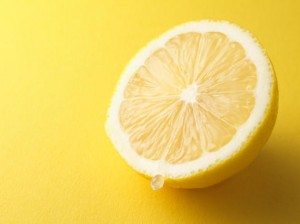
Baking Soda
Another popular ingredient for DIY beauty products is baking soda. Because of the potency of this product to reduce acne and remove dead skin cells, it’s even used by international cosmetic manufacturers in making and developing their skincare line. However, using baking soda in conjunction with a brown sugar exfoliant isn’t an excellent idea.
This is because baking soda, when applied directly to the skin in its pure form, can cause an imbalance in the skin’s pH. This can make the skin too dry or too oily, which can cause other skin problems. Baking soda is also proven to cause micro-scarring since these particles are too rough for the skin.
Salicylic and Glycolic Acid
Contrary to popular belief, it’s easy to obtain salicylic and glycolic acid even if you don’t have a degree in medicine or skincare. All you need to do is go to your local pharmacy or dermatologist and ask for these products, and you’re good to go.
However, it’s worth noting that despite being proven to be effective, they are not meant to be applied directly onto the skin without the approval of your dermatologist or used as an ingredient in a brown sugar exfoliant recipe since these chemicals can be too harsh. They can cause severe skin irritations, including first-degree burns, when used incorrectly.
Alcohol
Even though alcohol is one of the most potent antibacterial compounds in the market, it should never be used as a base for a brown sugar exfoliant. This is because alcohol can be extremely drying to the skin even if it’s in its denatured form or if it’s derived from plants. Considering that exfoliation can already be drying on its own, using alcohol would further dry out the skin, which can lead to the formation of wrinkles and even acne.
Aside from these products, you should also stay away from ingredients that you’re allergic to. This is why it’s better to consult your physician or dermatologist before using any ingredients in your brown sugar exfoliant.
 Homemade Facial Exfoliator Recipes Using Salt and Sugar
Homemade Facial Exfoliator Recipes Using Salt and Sugar
Salt and sugar are basic ingredients that we use for seasoning and for giving flavor to our food. From delicious appetizers to sumptuous main dishes to irresistible desserts, these two basic kitchen ingredients are always present to give our food that extra oomph! These ingredients also help you create your own facial exfoliator.
But salt and sugar are not only used as indispensable ingredients to our food; they’re also used as basic ingredients for a DIY homemade facial exfoliator. A lot of recipes use salt and sugar because their texture is good for exfoliating the skin; plus, they’re also great at unclogging pores. (Using salt and sugar is also cheaper than using other exfoliants.)
Also Read: How to Say No to Sugar Cravings
Furthermore, sugar helps moisturize and hydrate the skin as well as prevents it from drying. It boosts blood circulation, skin cell regeneration, and collagen production. It’s even used as a homemade remedy for chapped lips. While sugar may be good for dry and sensitive skin types, salt, however, is good for those with oily and combination skin types.
Salt isn’t only a natural exfoliant, but it’s also a natural remedy for reducing skin puffiness. Like sugar, it helps improve the blood circulation. Salt also helps clear the bacteria that have built up inside our pores, and it also improves the texture of our skin by tightening it.
Here are some example facial exfoliator recipes using salt and sugar:
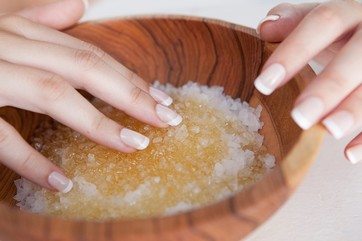
“Sugar Oh Honey Honey” Facial Scrub
Ingredients:
- 1 tbsp brown sugar
- 1 tbsp honey
- Few drops of fresh lemon juice
Mix everything and apply to the face in circular motions. Rinse with warm water. Use this twice a week.
Tightening Salt and Tomato Facial Scrub
Ingredients:
- 2 tbsp sea salt
- 1 tbsp olive oil
- 1 – 2 crushed tomatoes
To help moisturize and retain your skin’s elasticity, just mix everything in. Make sure that the tomatoes are crushed very well as to make the mixture pasty. Apply and leave on the face for about 10 minutes.
Simple Sugar Homemade Facial Exfoliator
Ingredients:
- Brown Sugar
- Olive Oil
Mix the brown sugar and olive oil into a 2:1 ratio. Gently spread on the face. Rinse with cool water.
Simple Salt Scrub for Oily Skin
Ingredients:
- Sea salt
- Lemon Juice
Mix fresh lemon juice and sea salt in equal amounts. Massage onto the face and leave for about two minutes.
Sugar Scrub for Sensitive Skin
Ingredients:
- 1 cup sugar
- ½ avocado
- ¼ cup avocado oil
- 6 slices of cucumber
Mash the cucumber and avocado well. Mix the mashed cucumber and avocado with sugar and avocado oil. Apply and leave for about 15 minutes. Rinse with lukewarm water.
Salt and Papaya Homemade Facial Exfoliator
Ingredients:
- 50 grams of sea salt
- 1 ripe papaya
- 50 grams ground rice
- Milk (as much as you like)
- Honey (as much as you like)
Mash the papaya and mix it with sea salt and rice. In a separate bowl, mix the milk and honey. Apply the mixed papaya, salt, and rice onto your face. Massage and leave for 10-15 minutes. Rub off the exfoliator using the milk and honey mixture. Let it settle for about 10 minutes. Rinse off with warm water.
You can also invent your own sugar or salt exfoliator by combining either salt or sugar, any oil of your choice (except ordinary cooking oil of course!), and any fruit of your choice.
Just remember that choosing which ingredient to use should depend on your skin type. If you’ve a dry and sensitive skin type, then make sugar your best friend and steer clear from salt as it may dry your skin more and may give you a slight stinging sensation. But if you’re more on the oily and combination skin type side, then using salt would be best for you, though you can still use sugar if you like.

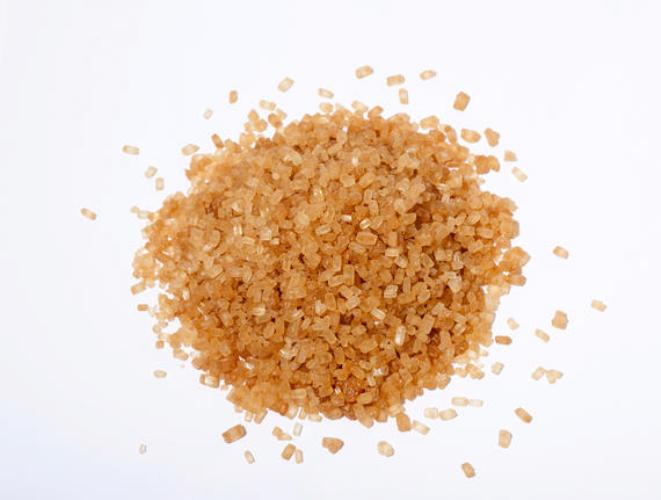


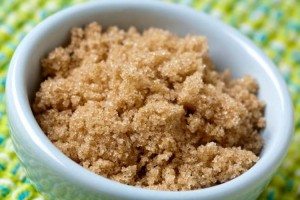 DIY Brown Sugar Exfoliant: Products to Use
DIY Brown Sugar Exfoliant: Products to Use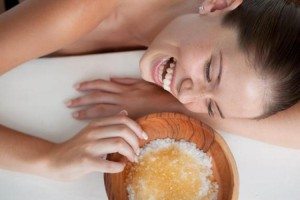 Using a Brown Sugar Exfoliant According to Your Skin Type
Using a Brown Sugar Exfoliant According to Your Skin Type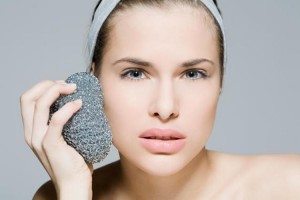 What to Avoid When Using Brown Sugar Exfoliant
What to Avoid When Using Brown Sugar Exfoliant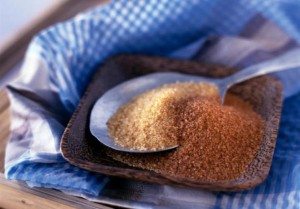 Ingredients to Avoid When Making Brown Sugar Exfoliant
Ingredients to Avoid When Making Brown Sugar Exfoliant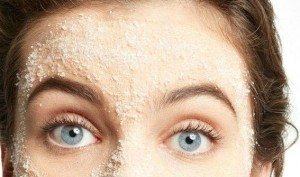 Homemade Facial Exfoliator Recipes Using Salt and Sugar
Homemade Facial Exfoliator Recipes Using Salt and Sugar
